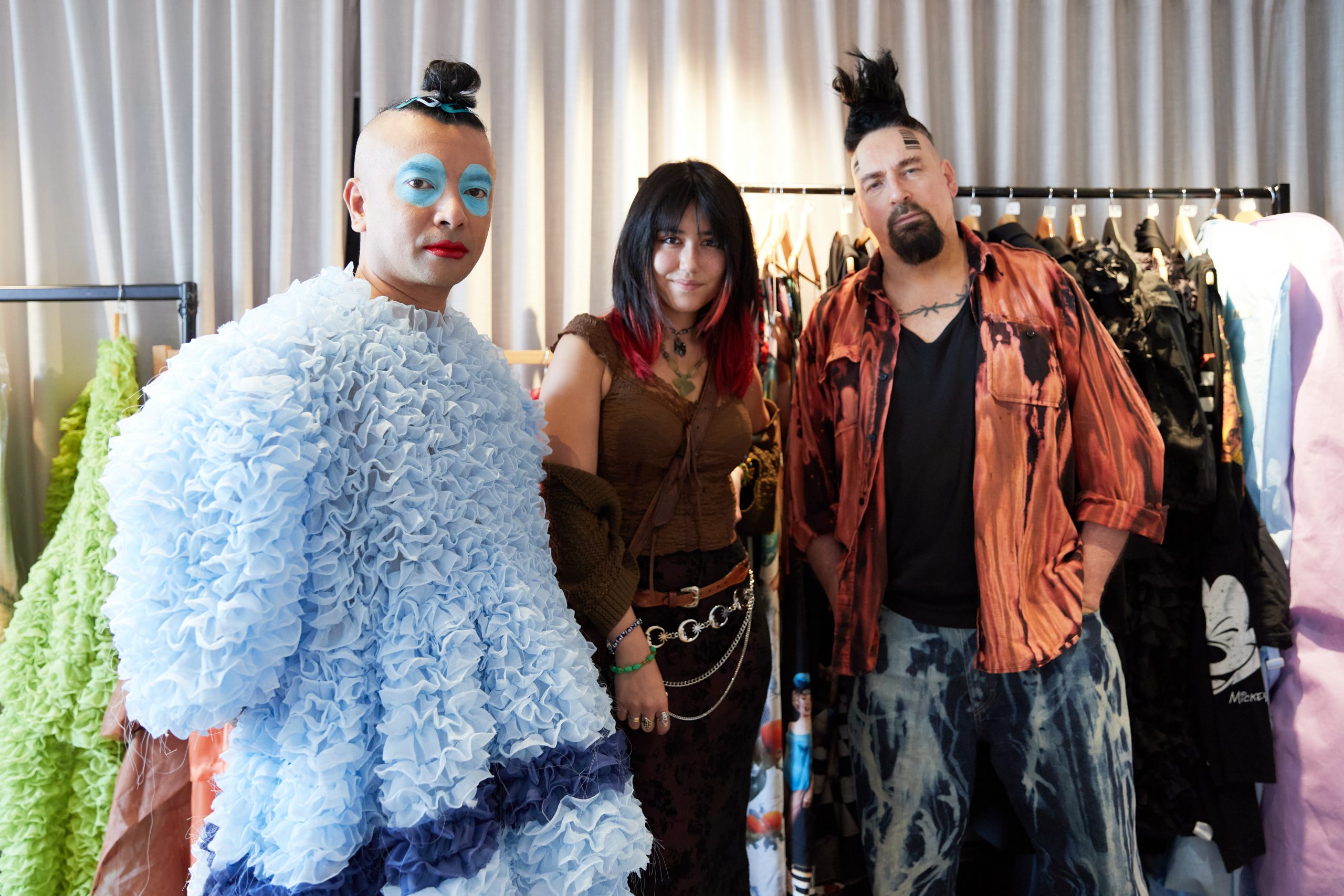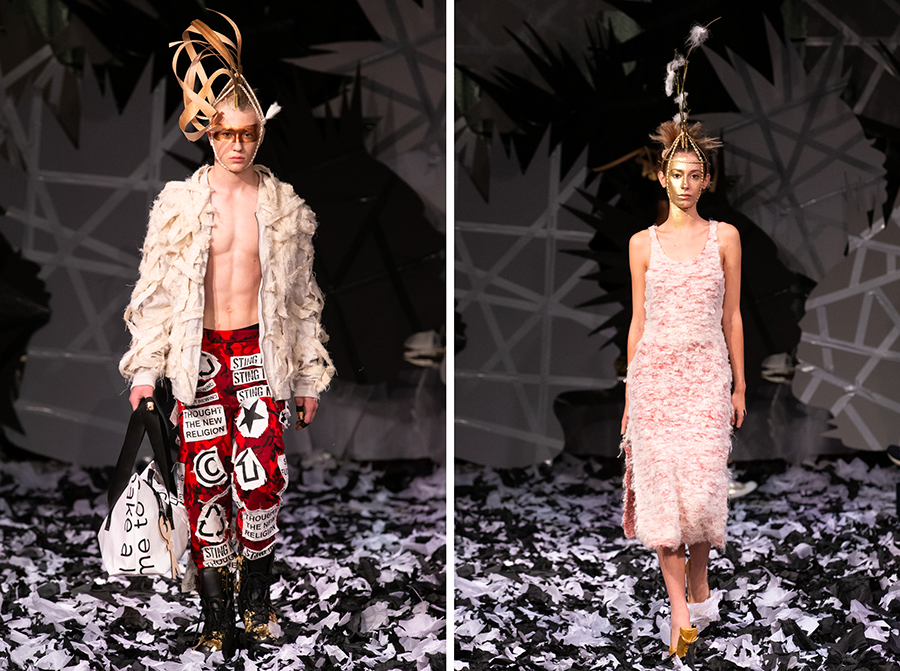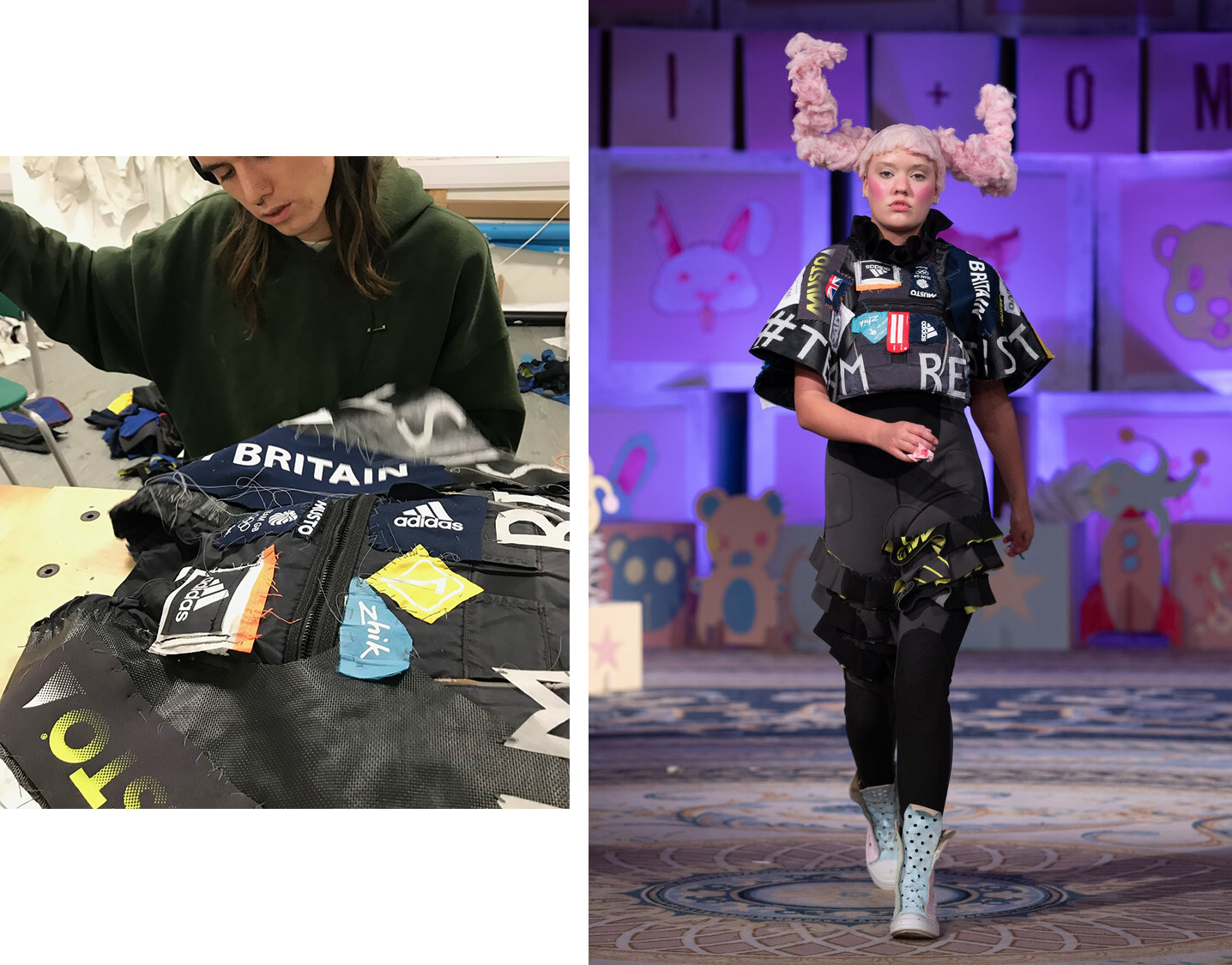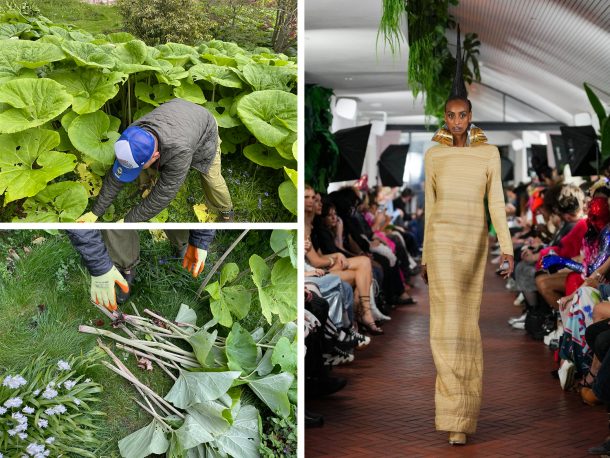For the V&A East Museum’s Why We Make galleries, the voices and stories of artists and designers are a central focus. In a new interview series, Why Do You Make?, participants from our Youth Collective, past and present, meet leading creative practitioners to uncover their personal motivation for making and design.
In the first instalment, Joanna Afroozi (Youth Collective Cohort 3) sits down with VIN + OMI, an award-winning design studio that pioneers sustainable practices in fashion and textiles manufacture and design. Two looks from VIN + OMI’s Spring/Summer 2020 collection, Sting, and one from their Autumn/Winter 2020 collection Resist, were donated to the V&A collection and will show as part of the V&A East Museum’s Why We Make galleries.

Joanna Afroozi
Why do you make?
VIN
We both have a deep-rooted desire to make and always have multiple projects on the go at any time. When we started making as a brand in 2000, however, we had to put a stop to just producing. The overwhelming principle of not wanting to do the wrong thing for the planet became paramount. There was a turning point when we thought about how we had to curb the urge to just make and shift our creative thinking to the wider process. We see VIN + OMI, the brand, as a large making project. Everyday we craft the way we move forward. Creating our dresses and interiors is hands on, tactile making. The crafting of VIN + OMI is more nebulous, but we feel the same way about its development as if it were a dress.

Joanna Afroozi
At what point did eco-activism find its way into your designs, and when did your work evolve from fashion into consultancy and other forms of art?
VIN
When we started out, our focus was on how we could get hold of materials that had been made ethically, hadn’t been through 10 different people and didn’t cost a fortune. We started with latex from Malaysia. We went to look at the plantations and they were terrible. The workers weren’t being looked after and there were no educational programmes for the villages. We thought, ‘we can do better than this’. We got some investment and put it into a plantation. The people needed to be treated right. The trees needed to be treated right. It was also about shipping the latex with other things to reduce the carbon footprint. Through that first project we learned a lot; that was 23 years ago.
OMI
We never set out to be in the fashion industry. It was blue-sky thinking, and a crazy idea of where sustainable design could go. In design, there is the frivolous idea that you can manufacture anything you want without thinking about the impact on the planet. We wanted to counter this attitude, so we started a manifesto. At the start, we were very naïve; we thought we could change the world.
VIN
When we started to realise the mess that the fashion industry was in, we wanted to challenge it. We don’t like being part of a group where we have to go along with what everybody else thinks. The fashion world is about saying everything’s wonderful and everyone’s amazing, and that’s not true. They’ve got their own way of dealing with things, which can be quite cutting, and they don’t care a lot about the planet. We thought, ‘we’re nothing like these people so why should we join a group with them? Why should we be part of an industry we don’t believe in?’
Joanna Afroozi
That’s really inspiring, especially considering it was 23 years ago.
OMI
We were called hippies by the British Fashion Council and had lots of doors shut in our faces. But it was also a time when new scholarship allowed us to really understand about sustainability. Fashion became our tool in conveying that message; it’s a language more universal than English. Everybody wears clothes so we thought they could be our canvas. We could write a million manifestoes and they would never be translated, but if we put something out on the catwalk, something innovative combining environmental, social and educational elements, that would create a conversation.
Joanna Afroozi
Knowing that your work is going to be archived at the V&A, what do you hope people will take from it?
VIN
We want to inspire young people to see that they can do things their own way and a major museum will recognise that.
The items in the V&A East originate from our engagement with the wider making process. The outfit made from the Team GB sailing equipment wasn’t just a case of reworking discarded sailing materials. That project originated from a conversation with Olympic gold medal winner Hannah Mills, who we contacted due to her passionate work in recycling plastic and helping save the oceans. She donated materials from Team GB and walked in the show.

The nettle pieces stem from our exploration of the UK countryside and the questions of what large estates do with their organic waste. This led to our meeting King Charles and discussions about what we could take from his estates.

VIN
We work 75 per cent of the time on paper, drawing every seam and figuring out how much electricity is going to be used. We ask what sort of educational programme we can inject into a garment and the innovations we can create around that. Once we have all of that, then we create the piece. Our practice plays with so many factors: the zeitgeist, popular culture, technology, social culture, diversifying of gender. Design is secondary.
Joanna Afroozi
Your work is political, but it stays at grassroots and is people and community orientated. Have you considered speaking on a global level?
OMI
There are a lot of institutions who ask for your opinions and then nothing is implemented. They like the idea of us sitting there, but I think we learnt that the way forward is working with people at the grassroots level and really understanding what communities need. That is where the power is. Not in Westminster. And all of our work is a rebellion. It’s a statement, a manifesto. Every piece has a story.
VIN
It’s not about the design, it’s about the cause. We believe that in the future people will really think about the origins of their clothes. For example, in Summer 2023 we were at King Charles’s private residence in Sandringham. In the grounds there is quite a rare plant, which grows out of control, growing on the side of a lake. They gave us permission to wade into the lake and just take some of this plant. We made the world’s first dress out of that plant and put it on the catwalk in September that year. We want people to see that process and think, wow, that plant had never been used before in a dress or textile. We developed something new and that’s what we really enjoy doing.

OMI
We are powered by nature and our collaborators – be it King Charles, Debbie Harry, Michelle Obama, or whoever – all align with us on one thing: the environment.
VIN
It’s not about giving celebrities free clothes. It’s about getting people to buy into our ideology.
Joanna Afroozi
I really like that, because there’s been an explosion in looking aesthetic, which removes the meaning behind the creation of different garments. How do you feel about this and the disconnect it creates from the making process?
OMI
I hate it. Recently we were in Paris and decided to go to the Ritz. We were all made-up – Vin had a Mohican; I had my face painted and was in a dress – and we walked up to the door and were refused entry. Right next to us there was somebody who looked exactly as you described, that aesthetically perfect look that has no soul or meaning to it, and they walked straight in. It’s sad that design has gone down that road and has taken away the very essence of what makes someone creative, because commerciality has taken over.
Joanna Afroozi
What are your opinions on fast fashion?
VIN
Trends come and go in clothing; fast fashion may just be a trend and in 10 or 15 years there won’t be fast fashion. Nor will there be really expensive designer brands, because they’re obscene. Perhaps there will be a new way of looking at things; hopefully it will be smaller businesses that can make wonderful stuff for the right reasons.
Joanna Afroozi
People are programmed to buy as much as possible and to look as good as possible, and it removes meaning from clothing and from design. How do you deal with that when your work counteracts and encounters it everyday?
OMI
I used to be so angry but then I reached a point when I looked around and thought, ‘we’ve created this wonderful community and that’s enough’. Backstage at our shows it’s all our friends working together, and it’s fun. It’s sad because a lot of our peers were wonderful, creative people, but the industry sucked the life and creativity out of them. When Vin and I started out we decided we couldn’t go down that road.
Joanna Afroozi
Is all the meaning in your work translated through the making process, or do you also implement meaning through the words, colours and shapes you use?
VIN
When we start, process is king and where we get our raw materials from dictates what we make. What is wasted and left around is what we’re working with for that season. For example, if they need to cut down the plants in a field to create a pathway, we get those plants, so we’re working with them to develop fabric.
When we put words onto our clothes it’s often when we’re angry about something political. We did a show called ‘Opinions’, where all the models were asked to think of something that they really wanted to say. When you see 60 models come out at the end, all carrying signs, placards and posters, it gives a powerful message.


